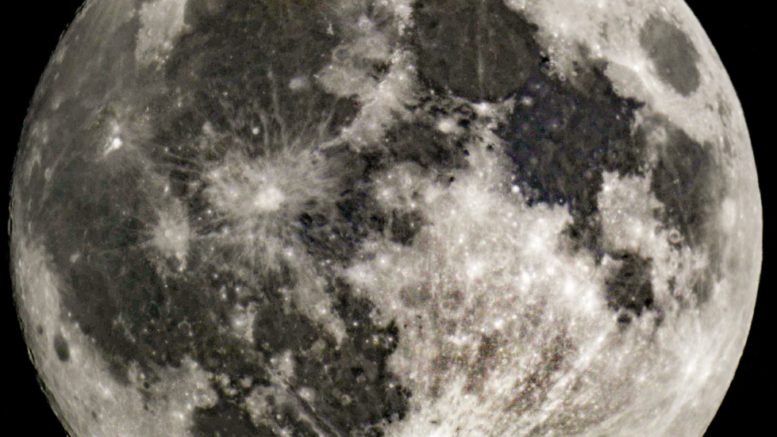The lunar Maria are large, dark, basaltic plains on Earth’s Moon, formed by ancient asteroid impacts on the far side on the Moon that triggered volcanic activity on the opposite, otherwise known as the near, side. They were dubbed maria, Latin for ‘seas’, by early astronomers who mistook them for actual seas. This is a list of Maria, which are large, dark, basaltic plains, on the Moon, which can include other basaltic plains, including the one oceanus as well as features known by the names lacus, palus and sinus. The currently used lunar nomenclature system was introduced in 1651 by Giovanni Battista Riccioli. The maria cover about 16% of the lunar surface, mostly on the side visible from Earth, and this article will be looking at the 5 smallest Maria on the surface of the moon.
Mare Spumans
Located just south of Mare Undarum on the Lunar near size, Mare Spumans is 140 km in size and is 1 of many elevated lakes contained in the Crisium basin, surrounding Mare Crisium. The surrounding basin material is of the Nectarian epoch, while the mare basalt being of the Upper Imbrian epoch. The crater Petit is located on the western rim of the mare, with this crater being white in color and surrounded by a well-defined ray system.
Mare Anguis
Located within the Crisium basin, Mare Anguis is a part of the Nectarian System, meaning that it was formed during the Nectarian time period. The Maria is 146 km in diameter, with the surface being darker in color, which indicates that it has been filled in with volcanic basalt rock since formation. The Maria forms part of a concentric ring to the northeast of the Crisium rim, and as a result, it lies at an elevation 800 m above Mare Crisium. An interesting note is that the small, 7–km diameter crater Eimmart A lies at the east edge of Mare Anguis, which is one proposed source for the Antarctic meteorite ALHA81005.
Mare Undarum
Located just north of Mare Spumans on the north side of the lunar surface, Mare Undarum, Latin for sea of waves, is a shallow, irregular lunar mare found inbetween the crater Firmicus and the eastern limb. Its location means that it lies within a trough between the third and fourth raised rings formed by the impact that created the Mare Crisium. It has an area of 245 square kilometers, with 5 known lunar domes within the mare. The surrounding basin material is of the Nectarian epoch, with the mare basalt being of the Upper Imbrian epoch. The crater Dubyago can be seen on the southern edge of the mare and the northeastern edge of the mare is the crater Condorcet P.
Mare Humboldtianum
Located just east of Mare Frigoris, Mare Humboldtianum, which translates to Sea of Alexander von Humboldt in Latin, is located along the northeastern limb of the moon. It then continues on to the far side, which means that observations are potentially affected by libration, and on occasion it can be hidden from view from Earth. The maximum size of the mare is 230 square kilometers with the surrounding basin extends for a diameter of over 600 km.
Mare Vaporum
Located between the located between the southwest rim of Mare Serenitatis and the southeast rim of Mare Imbrium, lies the Mare Vaporum, which is Latin for the sea of vapors. Named in 1651 by Giovanni Battista Riccioli, it lies in an old basin or crater that is within the Procellarum basin. The Mare is 242 kilometers or 150 miles in diameter and 55,000 square kilometers, 21,000 square miles, in area, and is bordered to the northeast by the mountain range Montes Apenninus. The south part of the mare observers will find Rima Hyginus, which is a rille intersected by the crater Hyginus.
Make sure to follow us on Twitter and Instagram, and make sure to check out other Top 5 articles like this.

Be the first to comment on "Top 5 Smallest Maria On The Moon"